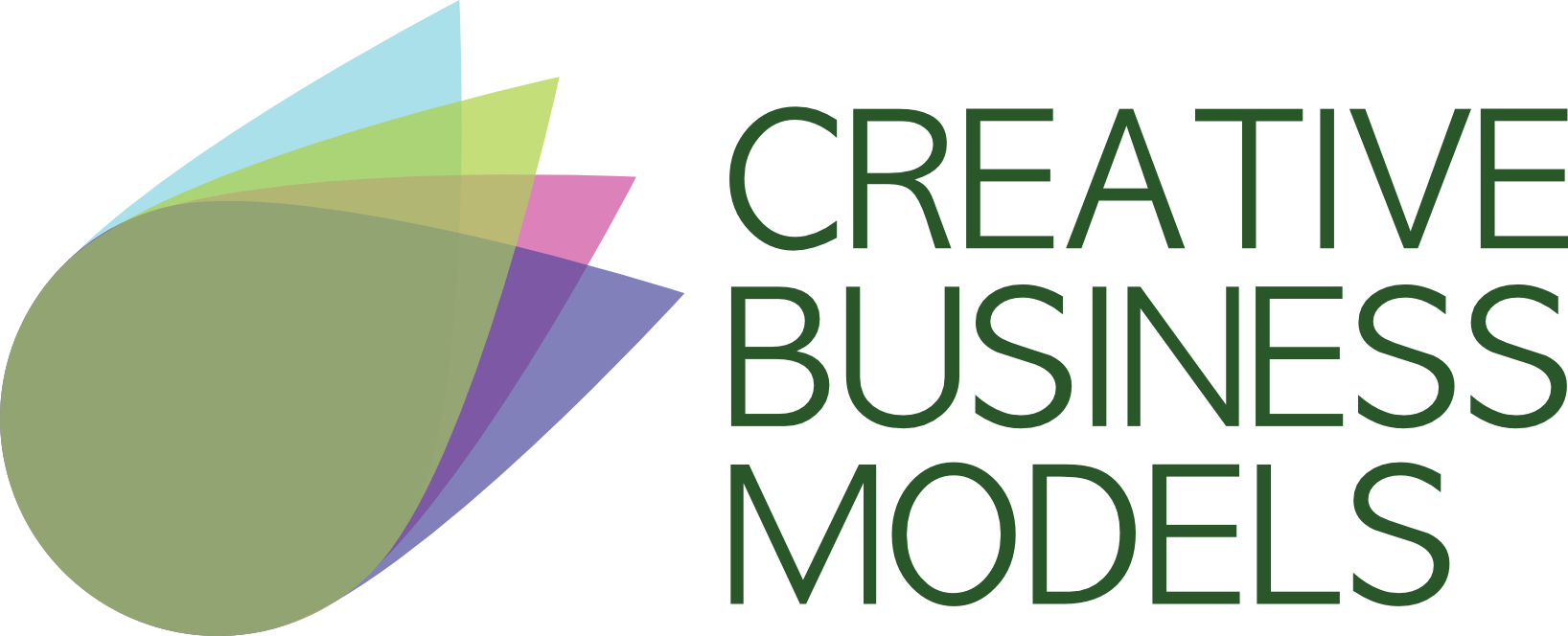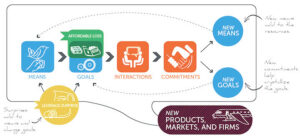As we know that business modeling is all about creating value for anybody involved in your project: your audience, your clients, yourself, etc… However, the question remains how do we do this?
- what choices do we have to make, and what activities do we have to perform to realize value creation?
- And how do we ensure that all those choices and activities come together to form a logical and coherent story?
- How do we start this business modeling process for our organization?
For many for-profit organizations such as commercial startups, this process of business modeling means starting from a unique opportunity in the market: “a large group of consumers is waiting for this, so we are going to offer it.” This is a very demand-driven way of thinking.
However, for many cultural and creative organizations often such a way of thinking does not work to build a sustainable organization in the long term. The reason to exist of these organizations is more often than not completely not based on some financial profit potential, but rather on the impact that can be achieved. For these organizations it means that the process of finding a functioning business model should start from another way of thinking.
Step 1: What do we find important?
The first step is to define your core values: what is important to us? This can be anything: for example playing an important role for the local community; accepting and actively promoting diversity; giving opportunities to young talent; bringing professional top players together in the circuit; or just to be able to express your own creativity. Focusing on such core values of the organization is a first step in creating a logical story in your cultural business model.
Step 2: What can we offer?
Continuing from your internal core ideas about the reason for existence of the organization, one can then think about what the organization can offer externally: “starting from what we consider important to ourselves, what can we offer to others?” This is also called a value proposition.
For this, the organization must have a good insight into the stakeholders of the organization. This is of course the public, but also the employees, the artists they work with, the (local) government, local residents, etc. Each of the stakeholder groups seek different things in a cultural organization, and you therefore offer a different package of values to each of these stakeholders.
For example, you offer the general public artistic inspiration or a place where people can come together, you might offer a group of artists a stage and the opportunity to profile themselves, while you offer local government opportunities for creating connections with society. A good understanding of the value packages that you offer is therefore important, whereby it is crucial that this value offer follows immediately and does not contradict the core values that you have defined in the first step of this process. For example, if a core value of a theater is to promote local talent, then this will be reflected in the offer you have to the public through its programming, to the artists themselves for instance in guidance the theater provides to them, etc.
Step 3: What choices do we need to make, to make this happen?
In a third and final step in this process, the question arises: “how can we live up to these different value propositions in reality?” Which choices must be made, and which activities must be undertaken to ensure that we have a value offer that is based on the core values of the organization?
These are in the end your business model decisions, consisting of all structural as well as daily choices that the organization makes. These choices relate to the internal processes within the organization (what do we do as an organization and – very important – what do we not do), to the financial model (how do we ensure income and liquidity to pay for our activities), as well as to the network of individuals and organizations that you work with. This last part is crucial, because as a cultural organization you always work together with a whole constellation of partners to shape value creation. You work with artists, suppliers, technical support, subsidy providers and investors, governments, etc. Important choices must be made: which organizations and individuals are suitable to help us realize our core values and realize the right value offer?
These three steps together form the building blocks of creating a business model within cultural and creative organizations. When these three steps follow each other in an organic manner – each step directly resulting from the previous one – you as a cultural or creative organization can create a business model that consists of a “logical story“. In this case, the supply is not demand-driven, but rather value-driven: based on a well-considered analysis of what the organization stands for and what is deemed important.



